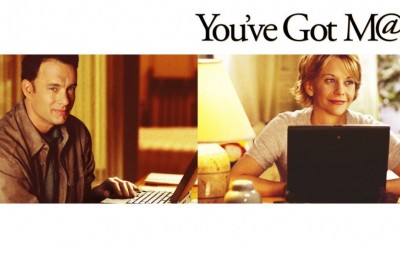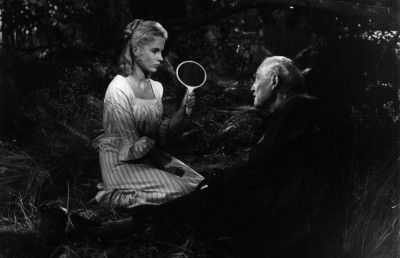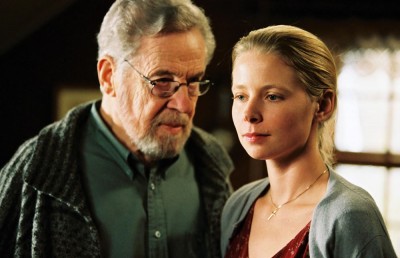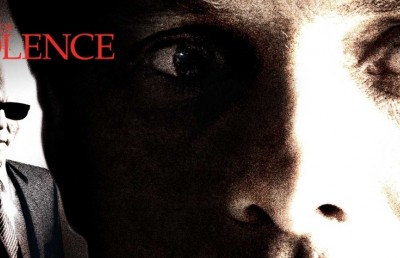Incident at Loch Ness and Herzog’s Hunt for the “Ecstatic Truth”
Searching for Nessie
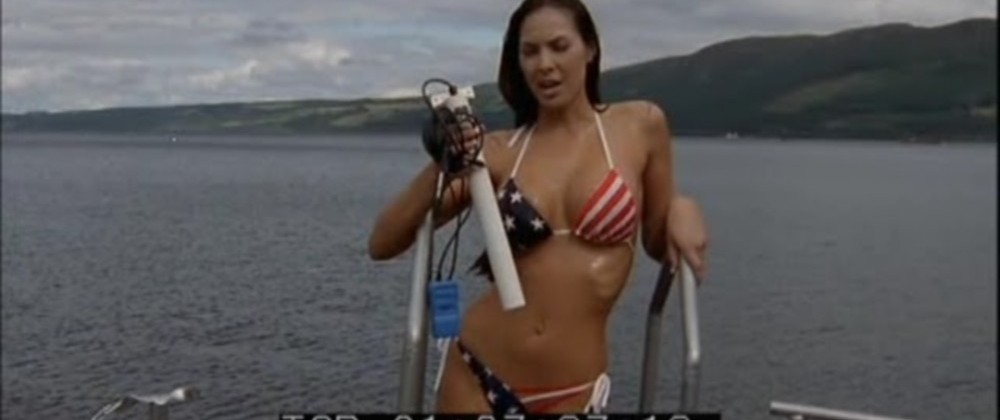
After reading press reports in 2003 that Werner Herzog was to make a documentary about the Loch Ness monster, I immediately laughed. The announced film The Enigma of Loch Ness seemed too perfect for Herzog, too obvious an opportunity for a quixotic journey into the “truth” surrounding the famously rumored creature, or at least an examination of the cultural phenomenon from which such rumors originated. Even if Herzog—perhaps the quintessential person for the search—could not find the monster, I suspected he would at least make up something entertaining. Needless to say, I was not disappointed when Incident at Loch Ness appeared the following year, albeit released as a film by writer/producer/director Zak Penn.
Incident is a “mockumentary” of sorts, at once a satire of Hollywood film production and a playfully self-referential commentary on Herzog’s own career, but its interplay of equally spurious narratological levels (three fictional “documentaries” within each other) deserves more comment than it has yet received. Although the entire film is actually a loosely scripted fiction (by producer/director Zak Penn), Incident at Loch Ness is framed as a “documentary” pieced together by Penn from footage originally shot by cinematographer John Bailey as a different documentary called Herzog in Wonderland. (Ironically, the announcement of Herzog’s fake Enigma of Loch Ness project was so convincing that the BBC even wanted to film their own documentary, not unlike the fictional Bailey documentary, about the making of Herzog’s film.) Reminiscent of Les Blank’s very real documentary Burden of Dreams (1982), which captured the tumultuous making of Herzog’s Fitzcarraldo (1982), Bailey’s (fictional) documentary captures the disastrous production of Herzog’s own (equally fictional) documentary, The Enigma of Loch Ness. Bailey’s supposed footage includes interviews in which members of Herzog’s doomed production reflect upon the titular “incident,” an encounter with the monster (a visual-effects creation “captured” by Bailey’s camera) that allegedly left two crew members dead. Reports of this fatal “incident” (and fictitious threats of litigation between Herzog and Penn) were likewise released to the press as part of the film’s bid for apparent legitimacy, a covert publicity campaign playing upon Herzog’s own reputation as a filmmaker known for putting his crew in danger.
Herzog addresses this reputation early in the film over footage from features like Aguirre, the Wrath of God (1972) and Fitzcarraldo; and documentaries like La Soufrière (1977), My Best Fiend (1999), and Blank’s Burden of Dreams. “Yes, I do have a reputation of being a filmmaker getting himself into dangerous situations and into adventures and into trouble,” he says. “That is my reputation, but it was never my intention to get into trouble or run excessive risks.” From behind the camera, Bailey notices Herzog’s research on the Loch Ness monster and Herzog shows him a famous photo of the creature, explaining how the photo was faked using a miniature model; later in the film we see Penn launching his own miniature model of the creature into the lake, demanding that Herzog create his own version of that same illusion. Herzog explains the planned Enigma of Loch Ness documentary to Bailey: “The whole thing about Loch Ness is more or less a figment of our fantasy and I like that much more than the real monster.” Herzog’s interest in the monster as a cultural construction, the product of “our collective dreams and collective nightmares,” follows one of the great themes of his oeuvre, whether in fictional features like Even Dwarves Started Small (1970) or documentaries like Lessons of Darkness (1992): a quest to locate the deep fears and desires that exist beneath our modern world, those strange monsters and superstitions lurking at the frayed edges of our civilization as a cultural necessity to replace fears of the unknown which were more prevalent in pre-industrial society.
“I’ve always been very interested in the difference between fact and truth,” Herzog explains to Bailey, “and I’ve always sensed that there is something like a deeper truth. It exists in cinema and I would call it the ‘ecstatic truth.’” Here Herzog lays out one of his personal philosophies of filmmaking in language taken almost directly from his 1999 Minnesota Declaration on “Truth and Fact in Documentary Cinema.” Herzog (2002) has explained elsewhere that the boundary between fiction and documentary does not exist in his films; for example, he considers Fitzcarraldo, a fictional feature, to be his best “documentary.” [1] The supposed objectivity of cinéma vérité only observes the “accountant’s truth” of a matter, while subtle stylization can allow one to penetrate to a deeper truth—an “ecstatic truth” akin to intense poetic effect—not otherwise filmable. “Through invention, through imagination, through fabrication, I become more truthful than the little bureaucrats,” he remarks. [2] This stylization allows the poetic “ecstatic truth” to be uncovered, as opposed to vérité documentaries which stick to surface facts like mere television reportage. [3] Indeed, the fictional Enigma of Loch Ness project bears some general similarities with Bells from the Deep (1993), one of his most stylized and fabricated “documentaries,” for both films deal with mythical underwater inhabitants of deep lakes and the origins of such superstitions from conflicting religious belief systems. In this film, Herzog believes that he can find the “ecstatic truth” behind such myths in those who have supposedly encountered the Loch Ness monster, so he decides to travel to Scotland and find “the real whackos out there.”
The fact that The Enigma of Loch Ness is not being produced by Werner Herzog Filmproduktion should raise red flags for viewers, since Herzog has independently produced virtually all of his own films. He explains to Bailey that self-producing was always done out of necessity and self-reliance, but in this case he allows Penn to produce because the money and crew are already secured by Penn, the real-life screenwriter of many regrettable Hollywood action movies (e.g., Last Action Hero, X2, Elektra, Behind Enemy Lines). Penn explains that he wanted to produce because it would finally allow him to be in a position of power during a film production, unlike the role of screenwriter. To this end, he supplies Herzog with a crew of real-life Hollywood professionals (all of whom play themselves in Incident) like cinematographer Gabriel Beristain and sound technician Russell Williams. Penn wants to use a Hollywood crew to create a Herzog documentary that is both credible and accessible to a wider, younger filmgoing audience; ironically, this desire to bring Herzog’s real films to a wider audience was truly one of Penn’s reasons for writing and directing Incident at Loch Ness in the first place. [4] Penn’s almost villainous portrayal in the film as a “Hollywood asshole” producer —“producing here being equivalent to “lying””— is markedly different from his real-life persona, for he satirically based his fictional character upon actual Hollywood producers he had encountered as a screenwriter. [5]
One of Incident??’s main tensions is the conflict between Penn’s fictional character as producer and Herzog’s nearly true-to-life portrayal of himself as director, a conflict figured explicitly in Hollywood vs. non-Hollywood terms. Whereas Herzog’s career has been dedicated to finding “unprocessed and fresh images” that have not yet been co-opted by mass media and popular culture [6], Penn is intent on covertly bringing big Hollywood “production value” (read: clichés) to the project under Herzog’s nose, whether by enlisting Playboy centerfold Kitana Baker as a “sonar operator,” by hiring actor Michael Karnow to play a crazed but credible cryptozoologist, or by deliberately faking footage of the monster with a remote controlled Nessie. When Herzog finally realizes how he is being manipulated by Penn, he threatens to leave the production, not wanting his ??Enigma documentary to be a simple hoax. When Penn argues that Herzog had told him that “all cinema is lies,” Herzog counters that if Penn is unable to make the distinction then he should be a talk show host or a lawyer. That distinction is between Herzog’s means of fabrication to reach an “ecstatic truth” and Penn’s fabrication for mere dramatic effect. The implication is that simple Hollywood trickery may violate factual accuracy but will ultimately foreground its own artificiality, whereas Herzog’s stylization is much more subtle and amplifies the underlying, often unfilmable “truth” behind the facts. This is how Herzog is able to create “adequate imagery” while Hollywood only perpetuates its own string of banalities.
The Loch Ness locals (albeit actors playing local people) even become hostile toward Herzog’s film crew, for rumors begin circulating that the Hollywood-funded production is deliberately out to create a hoax. Although the eventual failure of Herzog’s (fictional) documentary Enigma means that few answers are provided about the myth of Loch Ness, this supposed reaction by the locals implies that they are very protective about the myth, intent on keeping it confined as a parochial belief (for it originally sprang from the clashing religious cultures in the local region). They do not want Hollywood invading to further perpetuate a myth that some locals seem to take very seriously, even if they do not directly believe it. Just as myths about Herzog’s own filmmaking career have taken a life of their own (as he remarks several times during the film), the myth of Loch Ness has a power all of its own, a power that the locals do not want exploited, especially not by Hollywood. The myth’s power is evidenced as a spokesman for British waterways (actually a gaffer on Incident) explains that any minor occurrence on the lake suddenly draws international media attention merely through the lake’s association with a mythical creature. While local people in Herzog’s actual documentaries truly appreciate and understand Herzog’s stylization, even when it is revealed to them as fabrication [7], the locals of Loch Ness respond with anger and resentment. The Russian peasants in Bells from the Deep, for example, understand the reasons for Herzog’s stylization to uncover an “ecstatic truth”—something very different from the sort of trickery for dramatic effect suspected by the locals of Loch Ness because of the documentary’s Hollywood connections. Ironically it is Karnow the American cryptozoologist, the one person on Herzog’s crew who truly seems to believe in the monster, who bears the brunt of their blame, perhaps because he seems most responsible for spreading the myth outside of Scotland.
Herzog finally agrees to stay as director because he says he has taught himself not to allow a film to shut down on his account, referring to chaotic productions like Aguirre, the Wrath of God and Fitzcarraldo; his only condition is that Bailey be allowed to continue filming Herzog in Wonderland, thus supplying more “footage” for Incident. Only later will Herzog tell Penn that this is “the most chaotic production” he has ever seen, to which Penn mumbles that at least they aren’t pulling a boat over a hill (a lá Fitzcarraldo). When Herzog refuses to film Penn’s remote controlled Nessie, Penn even pulls a gun and threatens to direct Herzog at gunpoint, just as Herzog was falsely rumored to do with Klaus Kinski on the set of Aguirre.
Incident has many such self-referential moments that point toward its own construction, either by referencing Herzog’s body of work or calling into question the authenticity of John Bailey’s supposedly “objective” documentary footage. During the three-day expedition on the lake, Bailey’s camera finally captures the Loch Ness monster on film (or rather, digital video). Reflecting on the encounter, Enigma??’s cinematographer Gabriel Beristain (who had originally thought the monster to be a special effect planted by Penn) notes that when filming a documentary he always keeps both eyes open, one viewing through the camera and the other on the “reality” outside. This is an interesting, almost Herzogian choice of words, suggesting that even in a documentary, everything captured by the camera is rendered somewhat unreal, for everything recorded by the camera’s eye is ultimately selected by the director. This also ties into Penn’s admission on the fake DVD commentary track that although the footage composing ??Incident was (allegedly) shot by John Bailey as Herzog in Wonderland, Penn claims directorial credit because he was the one who assembled Bailey’s footage. The blurred line between fact and fiction in documentaries is driven home by the simple actuality that even the so-called “reality” captured in a mockumentary like Incident is entirely fabricated and the monster truly is a visual effect.
The actual appearance of the monster, whether explicitly as a hoax or within diegetic “reality,” is quite often when Incident itself seems most like a hoax. For example, Bailey’s camera sometimes peeks around conveniently half-closed doors to record Penn’s hushed conversations about the workings of the remote controlled Nessie, and other times characters make entrances timed so well that the film seems staged. When the “real” monster (a digital visual effect) is captured by Bailey’s camera, it is typically during moments at which Penn’s trickery itself conflicts with Herzog’s vision; for example, when the fake sonar operator (brought in by Penn for sex appeal) is explaining the sonar equipment to Herzog’s camera, or when Penn throws the remote controlled Nessie into the water for Herzog to film it. The sudden appearance of the “real” monster counters each of Penn’s attempts at Hollywood-style fabrication, and this is why Penn notes at the end of Incident that, being a Hollywood screenwriter, he had tried to intentionally create conflict but eventually learned that more than enough conflict existed during the making of the film alone (not unlike Herzog’s past production experiences that are often just as exciting and turbulent as the resultant films). The deadpan comedic elements of Incident also serve to reveal it as fabricated, although they play off Herzog’s reputation as a “risk-taking madman” prone to disastrous film productions that border on comically quixotic absurdity. [8]
When the monster finally attacks Herzog’s boat, the film most clearly tips over into obvious fiction, revealing itself to be a complete fabrication. Diegetic “reality” and supposed diegetic fiction overlap as local authorities ignore the crew’s distress calls because they believe a hoax is being perpetrated by the Hollywood production. Herzog notes that the movie he had envisioned was gone forever and that Bailey’s own documentary had become “a kind of horror movie.” This statement is borne out when we see leaks spraying wildly as the monster rams the hull of the stalled boat, and when Herzog responds by vainly firing a flare gun at the monster as it passes by—both shots very reminiscent of Jaws (1975), the Steven Spielberg movie that set the tone for big Hollywood blockbusters. This is the type of Hollywood-style conflict that Penn was happy to be provided by chance, even if it allegedly cost the lives of two crew members —though viewers realize by this point that it is all “only a movie”.
Looking back upon the experience, Herzog says that the production was all lies and deceit and should not have been made. He explains that finding the monster was never his intention, so actually encountering it was “strangely unfulfilling,” leaving him questioning not only this experience but many others in the past. Although he even touched and photographed the creature, Herzog says that “the truth did not seem ecstatic. It seemed vulgar and pointless.” For Herzog then, the “truth” is not ecstatic because the monster’s now-verifiable existence becomes no more than a mere recorded fact; the poetic, “ecstatic” effect is in the myth itself, a myth now solved. As in Herzog’s real-life productions, the quest to uncover myths and achieve dreams often outweighs the end result of that quest; the importance for Herzog lies in questions and motivations, not in answers and goals. In direct contrast, Penn considers the production an epic adventure, just “like something out of a Werner Herzog film,” not a cause for regret. Penn is an “adventurer” in the very sense that Herzog hates—that is, a person out to be victorious over nature for mere self-promotion and confrontation with the extremes of humanity. [9] Penn is happy to have found definitive “truth” of the Loch Ness monster’s existence, considering tragedy to be the price of achieving one’s dreams. Although several people have died during the making of Herzog’s films (notably Fitzcarraldo), albeit not as a direct result of the productions themselves, Penn’s willingness to sacrifice people for films is not an attitude shared by Herzog. Incident shows us that, as an independent (or rather, self-reliant) filmmaker of sorts, Herzog has more respect for his subjects and characters than a “Hollywood asshole” driven by the financial bottom line.
Despite being part of the Hollywood system in real life (as screenwriter of big-budget Hollywood action movies), the satirical conflict presented by Penn in Incident at Loch Ness implies a glorification of the self-reliant, artistic spirit that Herzog exemplifies. By bringing his own experience with Hollywood producers to his character, Penn has fashioned a decent critique of Hollywood film production (e.g., in a deleted scene he blames actual 20th Century Fox executives by name for the “deaths” that occurred), but he clearly does not want to be taken too seriously. The film ends with silly circus-like music intended to remove all doubt that the preceding was entirely fictional, but the larger revelation of an entirely fabricated film that had previously passed itself off as documentary verisimilitude points back (in this context) at Herzog’s own films, highlighting the inability to distinguish between reality and fiction in them. Herzog’s oeuvre proves that striving for authenticity in film, no matter if it be a fictional feature or a “documentary,” always relies on taking different amounts of inspiration from life and constructing a believable filmic “reality.” Although Incident finally surrenders its claims to believability, it is nonetheless a worthy ode to Herzog’s body of work, a comedy all the more funny for those familiar with that work. Herzog has said elsewhere that the act of making films is an act of recording himself [10], and if nothing else, Incident at Loch Ness presents Zak Penn’s version of that recorded self with a mix of reverence and humor. Under the guise of Bailey’s supposed documentary about Herzog’s life and work, Herzog the director takes his place amongst the mad and visionary characters of his creation on an absurd quest for something beautiful and poetic, the sort of “truth” found only in dreams and nightmares.
1 Herzog, W. (2002). Herzog on Herzog. Paul Cronin (Ed.). London: Faber and Faber, p. 240.
2 Ibid., p. 239-240.
3 Ibid., p. 253.
4 According to the “real” Penn/Herzog commentary track on the 20th Century Fox Region 1 DVD. The DVD extends the film’s charade with a fake commentary track in which Herzog and Penn argue until Herzog storms out of the recording session. However, there is a hidden “real” commentary track with both men discussing the actual making of Incident. To access this, highlight “Commentary On” in the DVD’s Special Features menu, and then press Left, Up, and Enter on your DVD remote.
5 According to the “real” Penn/Herzog commentary track.
6 Herzog on Herzog, p. 66.
7 Ibid., p. 253.
8 As captured in Burden of Dreams, for example. See also his discussion of La Soufrière in Herzog on Herzog, p. 148-150.
9 Herzog on Herzog, p. 198-199.
10 Ibid., p. 201-202.


